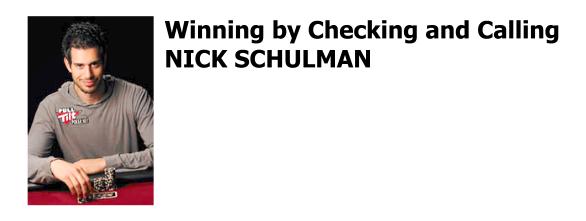
It’s been said many times that the weakest play in poker is calling – that it’s better to be raising or folding. In my opinion, there are situations where that statement simply isn’t true. I recently played a hand online at Full Tilt Poker that served as a perfect example of how checking and calling can win you a hand that you would have lost by folding (obviously) or raising.
The key to the situation is that I recognized I was up against an aggressive opponent and I had a marginal hand. I was playing $10/$20 6-max No-Limit Hold ’em, and the action folded around to me on the button with two red nines. I was pretty deep-stacked with $2,447 in front of me, and I made a standard raise to $60. The player in the small blind, who was even deeper with $3,356 in his stack, raised it to $210. The big blind folded.
It was an interesting spot. I obviously wasn’t going to fold there, but I feel pocket nines is the type of hand where calling is preferable to raising. Consider: If I raise there and get re-raised, I really don’t like my hand anymore. So I prefer the call.
The flop came 5d-8d-Qh, and although it wasn’t a great flop, with only one over-card to my nines, I figured I would call just about any bet. There was $437 in the pot and my opponent bet $280. I figured his range of hands could be pretty loose. He was a good player and an aggressive player, and while the Queen might have hit him, he could just as easily have a hand like A-J, J-10 suited or K-J suited. In that spot, I don’t really think you can fold nines, but I don’t recommend raising with them either. So I called, bringing the pot to $997.
The turn was the Jd, giving me a diamond draw and a gut-shot to go with my pair. My opponent checked, and I very strongly considered betting. But then I thought about it more carefully: What hand better than mine can I convince to fold? If he has pocket tens without the 10d, he probably folds that. But that’s about it. If he has Aces or Kings, he probably won’t fold. Other than pocket tens, the only hands I’ll get called by are hands that are ahead of me. And I could get check-raised and have to fold my hand without seeing the river. So I checked behind.
The river was the 8c, which paired the board, but was pretty much a blank. I hoped he’d check again and just let me check behind with what’s probably the best hand. Indeed, he checked, turned over Ad-Kh, and I won the pot.
Looking back at the hand, I think I was right to just check or call all the way. Pre-flop, who knows, if I’d re-raised, anything could have happened, including him shoving all in and me having to fold. On the flop, a raise probably would have worked, but that’s a really risky play. If I had bet the turn, that could have been disastrous. He had me covered, he’s shown himself to be an aggressive player, and he had the nut flush draw plus a gut-shot and two over-cards. There’s a very good chance he would have check-raised all in, which would have been an excellent play. I would’ve had to fold the best hand if he’d done that.
In that spot, I didn’t want to open myself up to getting outplayed, and I still had a lot of showdown value with my hand. Sometimes, against an aggressive player in a marginal situation, it’s best not to be aggressive back. Sometimes, aggression can cost you a pot that would have been yours if you’d been a little more cautious.
Nick Schulman
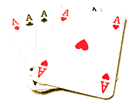 Look for Nick playing online at BetOnline Poker. Congratulations to Nick Schulman for winning his first WSOP bracelet in the 2009 $10K World Championship Deuce to Seven Lowball event.
Look for Nick playing online at BetOnline Poker. Congratulations to Nick Schulman for winning his first WSOP bracelet in the 2009 $10K World Championship Deuce to Seven Lowball event.
Nick’s vitals stats: 1 WSOP Bracelet, 1 WPT Title and over $3.8 Million in Career Tournament Earnings
 In hold ’em, you hear a lot of talk about aces and kings being the ultimate hands. That’s true, but don’t be too quick to put them in the same category, as many players do. A pair of aces before the flop logically belongs in a category all to itself.
In hold ’em, you hear a lot of talk about aces and kings being the ultimate hands. That’s true, but don’t be too quick to put them in the same category, as many players do. A pair of aces before the flop logically belongs in a category all to itself. Check out the poker at bet365 for more free tips, video tutorials and for some great poker play. (Sorry, USA not OK)
Check out the poker at bet365 for more free tips, video tutorials and for some great poker play. (Sorry, USA not OK) You should, of course, exercise caution when there are four cards of one suit on the board and you don’t have a flush. But sometimes you should bet right into that board without a flush.
You should, of course, exercise caution when there are four cards of one suit on the board and you don’t have a flush. But sometimes you should bet right into that board without a flush. Some say you shouldn’t ever gamble unless you have the best of it. But most of the really successful gamblers I’ve ever met sometimes are willing to wager when they’re not sure they have an edge.
Some say you shouldn’t ever gamble unless you have the best of it. But most of the really successful gamblers I’ve ever met sometimes are willing to wager when they’re not sure they have an edge.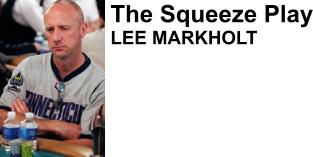
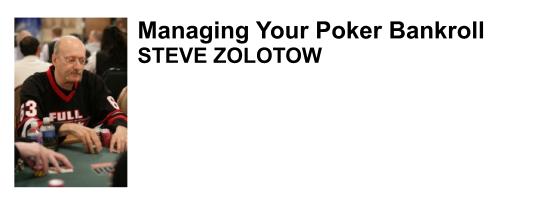 People always ask, “How much do I need to play in a certain stake game?” The usual answer to all poker questions is, “It depends.” But in this case, it is the wrong question. The question really should be, “Given my temperament and current financial situation, how much can I risk in a game?”
People always ask, “How much do I need to play in a certain stake game?” The usual answer to all poker questions is, “It depends.” But in this case, it is the wrong question. The question really should be, “Given my temperament and current financial situation, how much can I risk in a game?”
 ABOUT STEVE ZOLOTOW:
ABOUT STEVE ZOLOTOW: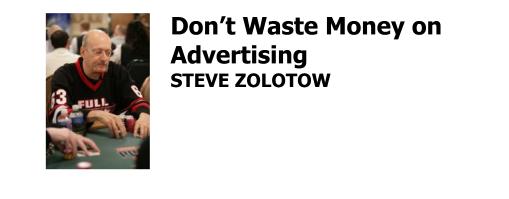 Table image can be a very powerful tool at the poker table, especially in ring games where you can expect to play a long session against the same opponents. But when it comes to tournament play, trying to project a certain table image can often times prove to be a futile endeavor. Your attempt might end up costing you precious chips now without gaining a later advantage, since you may be at a different table against different opponents a few minutes later.
Table image can be a very powerful tool at the poker table, especially in ring games where you can expect to play a long session against the same opponents. But when it comes to tournament play, trying to project a certain table image can often times prove to be a futile endeavor. Your attempt might end up costing you precious chips now without gaining a later advantage, since you may be at a different table against different opponents a few minutes later.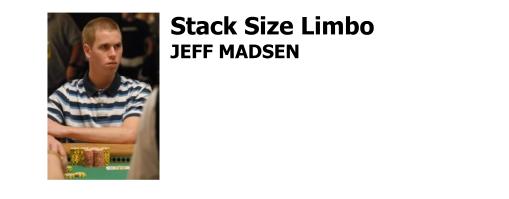 When you’re playing a tournament and sitting on around 15 big blinds, you can face some seriously tough pre-flop decisions. Welcome to stack size limbo. It feels likes you have too many chips to push all-in, but a standard pre-flop raise can prove disastrous if an aggressive player comes over the top and puts you to the test.
When you’re playing a tournament and sitting on around 15 big blinds, you can face some seriously tough pre-flop decisions. Welcome to stack size limbo. It feels likes you have too many chips to push all-in, but a standard pre-flop raise can prove disastrous if an aggressive player comes over the top and puts you to the test.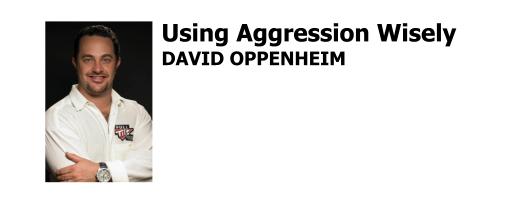 In the game of Hold ‘em, especially No Limit, aggression is usually rewarded. By being aggressive, you are putting your opponent in an uncomfortable situation and forcing him to either make a hand or make a bluff. You take over control of the pot and put yourself in the driver’s seat.
In the game of Hold ‘em, especially No Limit, aggression is usually rewarded. By being aggressive, you are putting your opponent in an uncomfortable situation and forcing him to either make a hand or make a bluff. You take over control of the pot and put yourself in the driver’s seat.

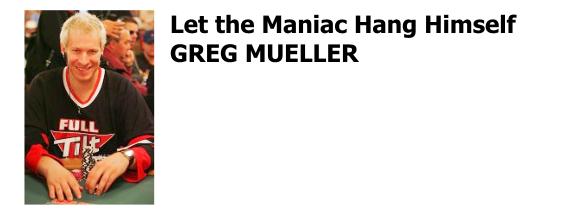
 Compare the
Compare the